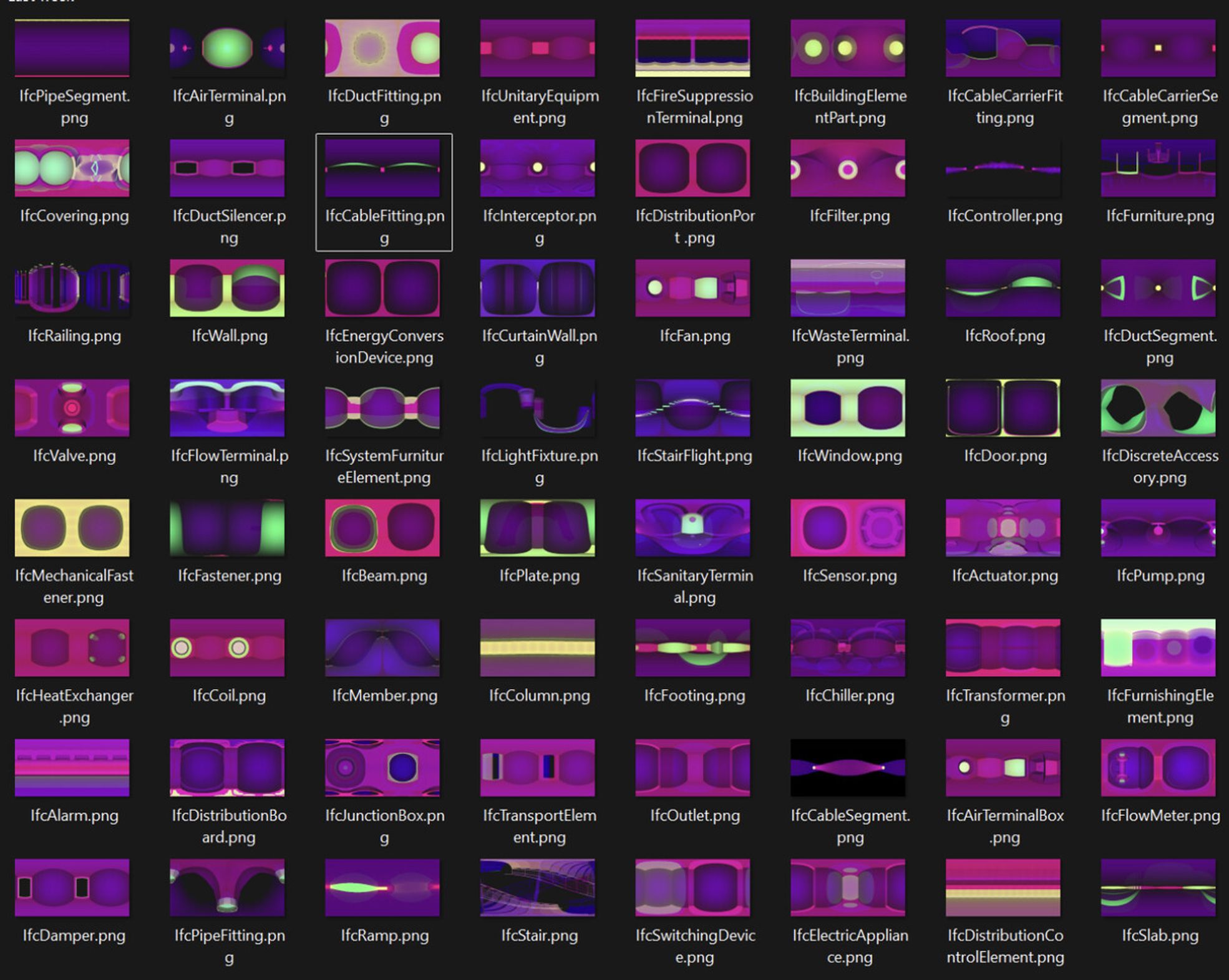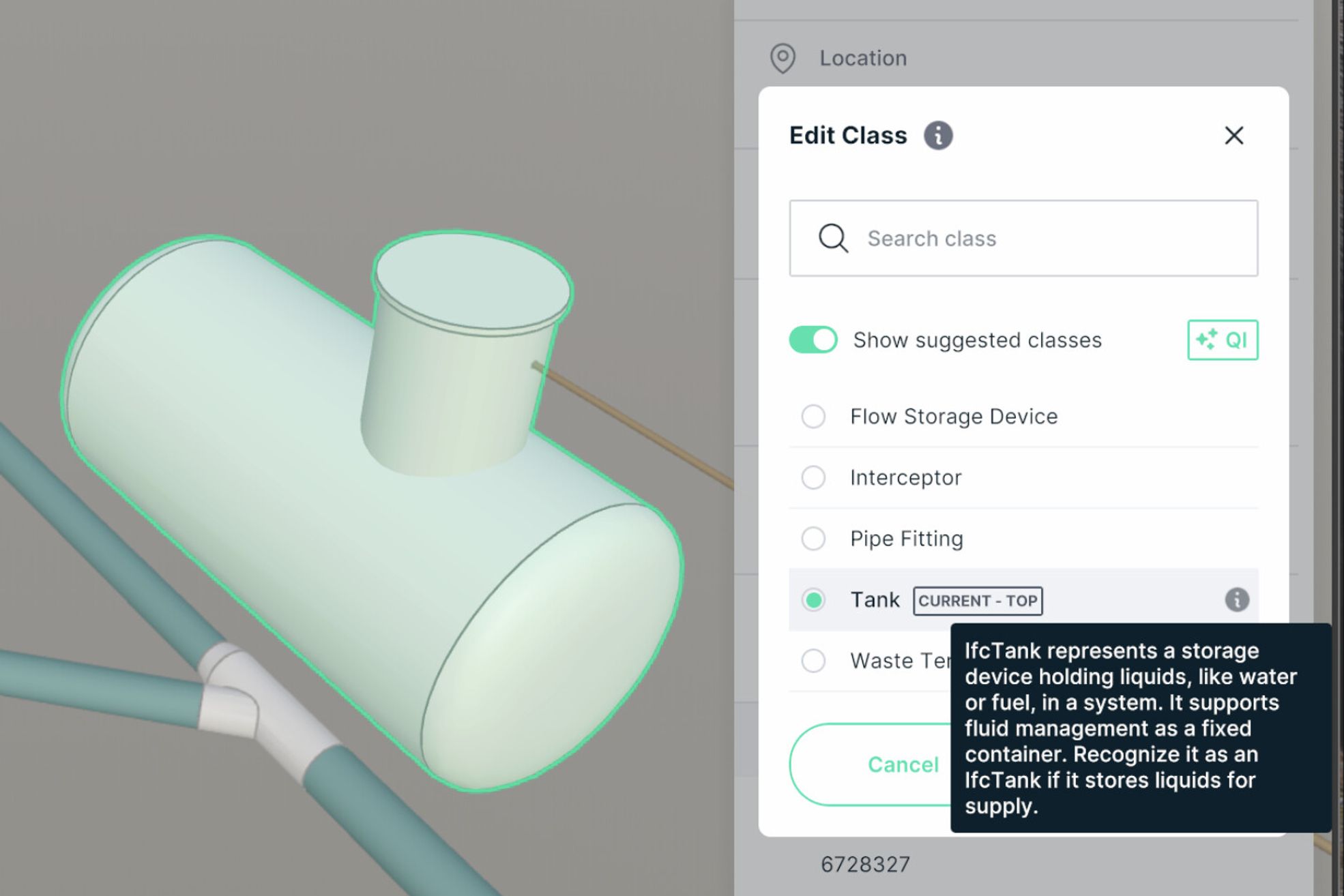In many projects, models contain objects that look right but aren’t labelled correctly. A simple rectangular element might be exported as a ‘IfcBuildingElementProxy’, even though it should be a wall, slab or covering. The geometry is there, but without the right IFC class, downstream uses like planning or clash detection quickly break down.
The extent to which standardization is adopted and succeeds is determined by its accessibility to a broader audience.
This is where Qonic Intelligence (QI) helps. By detecting and correcting misclassified elements through AI-assisted suggestions, QI ensures that design decisions are captured properly and models remain structured, reliable and ready for further use.
What is QI?
Qonic Intelligence (QI) is an award-winning, AI-powered classification system built natively into Qonic. It automatically classifies BIM objects into more than 100 IFC classes with over 96% accuracy, processing data directly from IFC imports.
For users, the experience is straightforward. The interface presents the top five most likely IFC classes with confidence scores. High-confidence matches are applied automatically, while uncertain cases prompt user validation. This way, professionals stay in control, but repetitive manual work disappears. Classification runs in real time, more than 100 objects per second on a standard laptop, making it both fast and practical in daily use.
How it works: teaching software to “see” like humans
What makes QI different is its multi-modal approach. Instead of relying only on geometry, it looks at several types of input together, much like a person who combines shape, position and context.
The key signals:
- Geometry and depth – to understand form and volume
- Orientation – how the element sits in space
- Structural density – an “X-ray” cue useful for simple meshes
- Spatial proximity – how close it is to other objects, which often hints at its function
Together, these signals create a rich digital “scan” that allows QI to infer what an element is and how it should behave in the model.

On top of that, unlike many systems limited to a short list of categories, QI supports the full set of IFC classes by design and expands automatically as the standard grows. It also learns continuously from new projects, achieving high accuracy on unseen data while staying fast and practical.
Scope & Impact
Training & benchmarking
- 8M+ IFC objects analysed during development
- 100+ IFC classes supported
- Applied on a wide range of projects worldwide: from residential and commercial buildings to infrastructure
- One year of development and fine-tuning before UI integration
Results in use
- 96% classification accuracy in internal benchmarks, including on ambiguous meshes
- Validated on federated models (architecture, structure, HVAC, plumbing, fire safety)
- Cleaner labelling reduces coordination friction and BCF issue volume
These figures show that QI is not a prototype but production ready to scale across disciplines, tools and project types.
Recognition
Qonic Intelligence has now won the buildingSMART openBIM Award 2025.🏆
Also called the “World Cup of BIM”, the openBIM Awards recognise the most impactful projects and technologies worldwide that advance open standards. The 2025 edition concluded in Berlin, honouring winners across design, construction, operations, sustainability, research, and technology.
The jury highlighted two main reasons for QI’s selection:
- Direct relevance for openBIM: delivering clean, standardised IFC data that strengthens collaboration across disciplines and tools.
- Sustainability and efficiency: unlike many AI solutions that demand heavy computing power, QI is designed for efficiency. Its compact neural networks run client-side on modest hardware, reducing energy consumption, avoiding constant server calls, and making advanced classification accessible to smaller firms and field teams alike.
Why it matters
Classification is not the goal; it’s the groundwork. When objects are labelled correctly, the rest of the workflow stops fighting bad data. Instead of wasting weeks on model clean-up, QI gives you a reliable base of correctly classified objects. That means:
- Accurate quantities. Take-offs and comparisons are generated with confidence, because elements are consistently mapped to the right IFC classes.
- Reliable IDS checks. Information Delivery Specifications can be applied directly, knowing the underlying classification is sound.
- Meaningful rule checks. Fire resistance, corridor widths or other requirements are verified against trustworthy data.
- Less rework. Because the basics are right, the endless loop of fixing exports and correcting issues downstream largely disappears.
The result is faster compliance, clearer decisions and more predictable delivery. Instead of wrestling with messy exports, project teams can focus on design, coordination and delivery.

What’s next
QI removes a major source of friction today and it opens the door to more:
- Background full-model scanning. Analysing whole models continuously, similar to clash detection, to keep data quality high without extra effort.
- Real-time suggestions while modelling. As geometry takes shape, QI can anticipate likely classes (roof, wall, window, etc.) and suggest the right assignment on the spot.
We are incredibly proud that Qonic Intelligence (QI) has received the buildingSMART International Technology Award 2025 in Berlin.
This recognition is not just about technology, but about the impact clean, reliable IFC data can have on real projects. It validates the hard work of our development team, the trust of our partners, and our commitment to making openBIM practical and accessible for everyone in the AEC industry.
And we’re only getting started.

